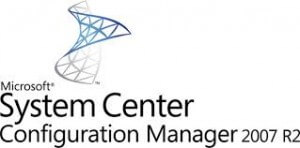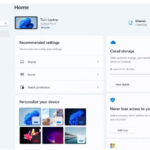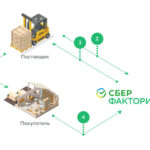
Автор:
Производитель: CBT Nuggets
Год выпуска: 2010
Продолжительность: 07:17:14
Тип материала: Видеоурок
Язык: Английский
Стоимость: 1999 рублей
Описание:
Exam 70-400 was retired July 31, 2013. However, this course retains value as a training resource.
This video training course with Greg Shields covers Microsoft System Center from installation to customizing tasks to collective and business critical client monitoring.
Recommended skills:
A year of experience using Microsoft Operations Manager (MOM) 2005 or System Center Operations Manager 2007 for medium-sized to large organizations
Experience with Active Directory
Experience configuring and deploying management packs
Recommended equipment:
Microsoft System Center Operations Manager 2007
Related certifications:
Microsoft Certified Systems Administrator (MCSA) on Windows Server 2003
Microsoft Certified Systems Engineer (MCSE) on Windows Server 2003
Related job functions:
IT professionals
Take the frustration out of your day-to-day, problem-solving efforts by using the powerful monitoring tools in Microsoft System Center Operations Manager (SCOM).
Trainer Greg Shields leaves no loose ends as he shows you SCOM's full monitoring power. After watching this video course you'll become the proactive problem solver your system needs.
The training is mapped to the Microsoft MCTS certification exam 70-400 -- a test that Greg describes as "down and dirty," because all the questions relate directly to skills you need to configure, deploy and maintain your system.
All trademarks and copyrights are the property of their respective holders.
[wpspoiler name="Подробное описание" ]
1. Introduction to SCOM & the 70-400 Exam (00:17:49)
The introduction to this course talks about our learning style, the development of the network we will use for demonstrations throughout this course, and introduces the learning objectives for the MCTS certification exam; 70-400.
2. Operations Management & SCOM Components (00:20:15)
Before we can begin our discussion on SCOM, we must first understand how it relates to the overarching topics of operations management in general. Here, we talk about operations management and the need for proactive monitoring, achieved in SCOM through state-based monitors and roll-up health status. Also in this training we go over the components that make up a SCOM infrastructure.
3. Installing SCOM (00:26:51)
MCTS certification training content covered in this training Nugget will go through what you need to know on install SCOM.
4. Configuring Management Group Settings (00:24:41)
Once installed, the next step is to configure the organization-level settings required by SCOM. This nugget goes over those settings with an eye towards their proper setting based on the size and needs of your infrastructure.
5. Discovering Resources & Installing Agents (00:24:31)
Resources are discovered and agents are typically installed by SCOM through its wizard-based interface. But there are some "gotchas" associated with managing assets in your organization. We’ll discuss each of these topics in this nugget.
6. Understanding, Finding, & Importing Management Packs (00:21:26)
Management Packs are the life blood of any SCOM infrastructure. Once assets have been discovered and are ready to ingest data into SCOM’s database, Management Packs provide the logic that assists administrators with knowing what events are useful and need to be featured. Management Packs also provide the knowledge that helps administrators understand what to troubleshoot when a server is no longer healthy.
7. Configuring Alerting & Notifications (00:20:02)
Management Packs can provide the logic for alerting administrators, but SCOM itself has a rich capability for limiting how notifications and alerts actually make their way to pagers. In fact, setting up notifications correctly so that there aren’t too many nor too few can be one of the biggest success factors in any SCOM implementation. Learn the best practices here.
8. Day-to-Day SCOM Operations (00:28:20)
Now that we’ve got our basic configuration down, this nugget will talk about the daily operations of a SCOM infrastructure in production. Here you’ll learn about resolving alerts and tuning resolution states, you’ll understand how and why you should put servers in maintenance mode when working with them, and understand the views you’ll see, and later create, that display the right data for the right administrator.
9. Customizing Monitors & Rules (00:35:16)
Management Packs downloaded from the Microsoft catalog or third parties are all sealed, which means their configuration cannot be changed. But sometimes the settings that dictate what behaviors are good and which are bad aren’t properly tuned for your particular IT environment. This nugget will discuss at length the sometimes complex process of tuning monitors and rules in your Management Packs to ensure they make sense for your needs.
10. Customizing Attributes, Groups, & Views (00:27:51)
Following on from the previous nugget, we then look into the monitoring of individual attributes on a system as well as how to create groups of computers and customized views of data for the other administrators in your environment. It is here that you’ll learn how to best gather together the right amount of data for consumption by the various groups in your IT infrastructure.
11. Customizing Tasks (00:17:23)
Tasks are yet another hot topic with SCOM, providing a way for you to automatically run a process or script right from within the SCOM console. This nugget will show you how to create a task as well as make it available for use by other administrators through their console views.
12. Understanding & Creating Synthetic Transactions (00:13:28)
True operations management requires a look at IT services not only from the server’s view but also from the perspective of the client. One way in which clients can verify that their needed services remain up and running is by sending synthetic transactions to the servers they work with. This nugget will explain the ideas behind synthetic transactions as well as how to set them up.
13. Understanding & Creating Distributed Applications (00:21:43)
With the client perspective fully in-hand, we can now begin the creation of fullly distributed applications, which are the creation of comprehensive monitoring solutions across every element that makes up an IT service. These are custom creations, as they work across the servers and applications in your infrastructure. In this nugget you’ll learn how to use SCOM’s designer to create your own distributed applications with the goal of creating a health roll-up across multiple elements at once.
14. Coverting Legacy Management Packs (00:14:33)
One element that’s critical for the exam but also critical if you want to use older Management Packs in your SCOM 2007 environment is the converting of legacy MPs. This nugget will discuss the process as well as explain some of the gotchas associated with their use.
15. Installing, Using, & Creating Reports (00:28:16)
SCOM leverages SQL Reporting Services for the generation of its reports. Yet the process to install it and ingest its needed models for the creation of good reports can be a complex undertaking. This nugget will explain everything you need to know to set up reporting and begin creating your own custom reports for management updates, historical tracking, and even planning.
16. Managing Users & User Roles (00:11:35)
SCOM has the ability to present views, tasks, and reports to users based on who they are. It also has the ability to aggregate users by role, making user administration much easier. This nugget will explain the process of user management in SCOM as well as the creation of user roles.
17. Configuring Audit Collection Services (00:24:14)
SCOM, by default, collects system and application data from the Windows event log. But if you want to get security data, you’ll need to install its add-on ACS component. ACS is no picnic to install and use, lacking even the most basic of GUI controls. In this nugget we’ll discuss its installation and use and talk about how you might leverage ACS as a separate-but-controlled mechanism for storing audit data.
18. Configuring Agentless Exception Monitoring (00:20:02)
Dr. Watson gets a bad rap and so does Microsoft’s Customer Experience Improvement Program for sending data to Microsoft. You can control that flow of data and even store it locally for the generation of global reports on system errors and behaviors with Agentless Exception Monitoring. You’ll find that adding SCOM to Microsoft’s Corporate Error Reporting service makes the gathering of this bug check data much more valuable to you and your organization.
19. Collective & Business Critical Client Monitoring (00:19:49)
SCOM isn’t just for servers. Its also a great tool for monitoring the clients on your network. But you probably don’t want to monitor all your clients, just the ones that are critical to the daily flow of your business. This nugget explains the need for client monitoring as well as how to set it up. You’ll also learn more about how monitored clients can become the basis for the very client perspectives that we discussed earlier in creating distributed applications.
20. SCOM Backup & Restore (00:19:09)
Every IT service has the need for some level of backup and restore. SCOM is no different. Yet SCOM’s mechanisms for backing itself up are complex at best. This nugget will help you identify exactly what you need to back up and the order of restoration in case of a failure.
[/wpspoiler]



